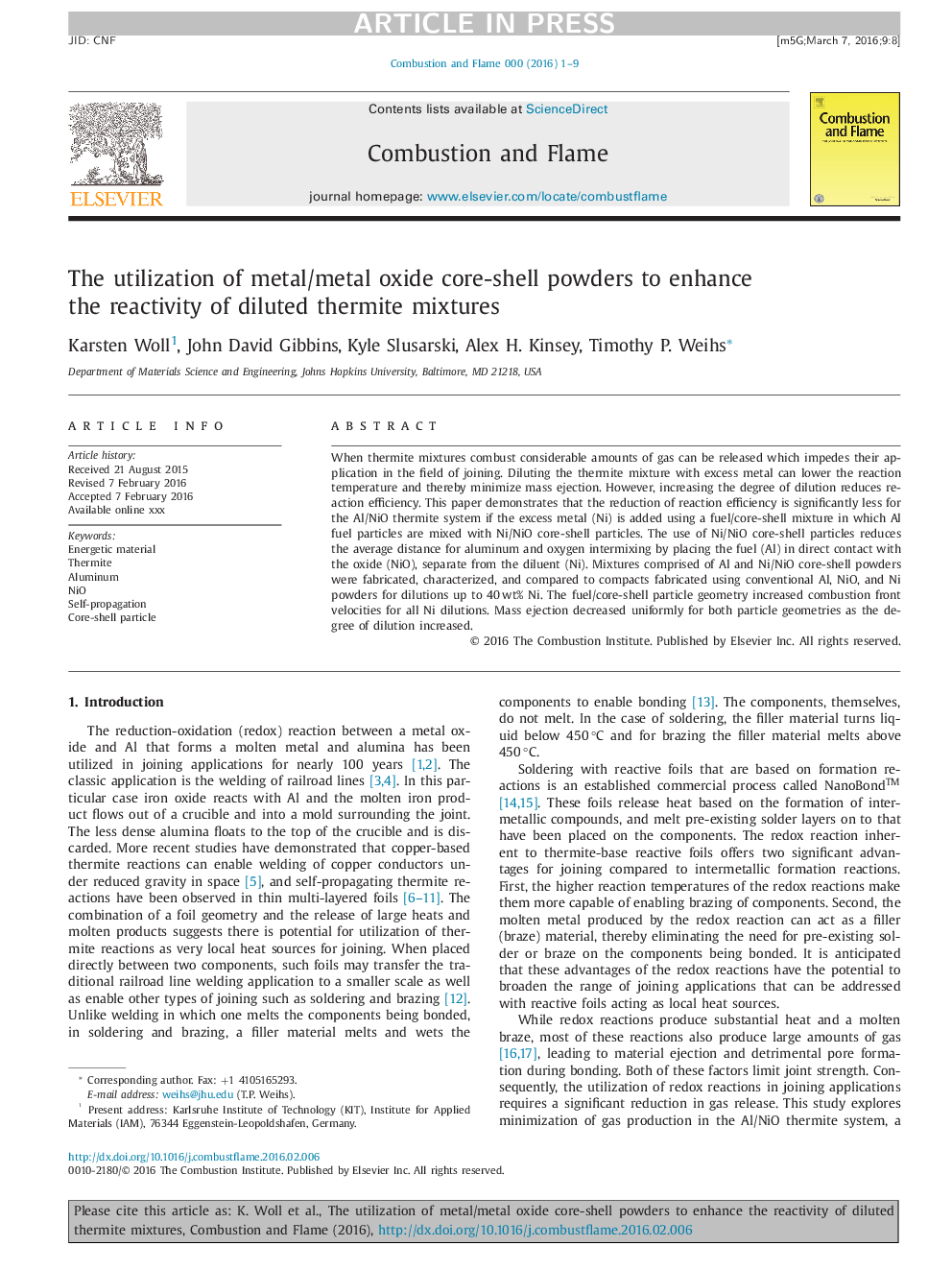| Article ID | Journal | Published Year | Pages | File Type |
|---|---|---|---|---|
| 6594115 | Combustion and Flame | 2016 | 9 Pages |
Abstract
When thermite mixtures combust considerable amounts of gas can be released which impedes their application in the field of joining. Diluting the thermite mixture with excess metal can lower the reaction temperature and thereby minimize mass ejection. However, increasing the degree of dilution reduces reaction efficiency. This paper demonstrates that the reduction of reaction efficiency is significantly less for the Al/NiO thermite system if the excess metal (Ni) is added using a fuel/core-shell mixture in which Al fuel particles are mixed with Ni/NiO core-shell particles. The use of Ni/NiO core-shell particles reduces the average distance for aluminum and oxygen intermixing by placing the fuel (Al) in direct contact with the oxide (NiO), separate from the diluent (Ni). Mixtures comprised of Al and Ni/NiO core-shell powders were fabricated, characterized, and compared to compacts fabricated using conventional Al, NiO, and Ni powders for dilutions up to 40Â wt% Ni. The fuel/core-shell particle geometry increased combustion front velocities for all Ni dilutions. Mass ejection decreased uniformly for both particle geometries as the degree of dilution increased.
Related Topics
Physical Sciences and Engineering
Chemical Engineering
Chemical Engineering (General)
Authors
Karsten Woll, John David Gibbins, Kyle Slusarski, Alex H. Kinsey, Timothy P. Weihs,
